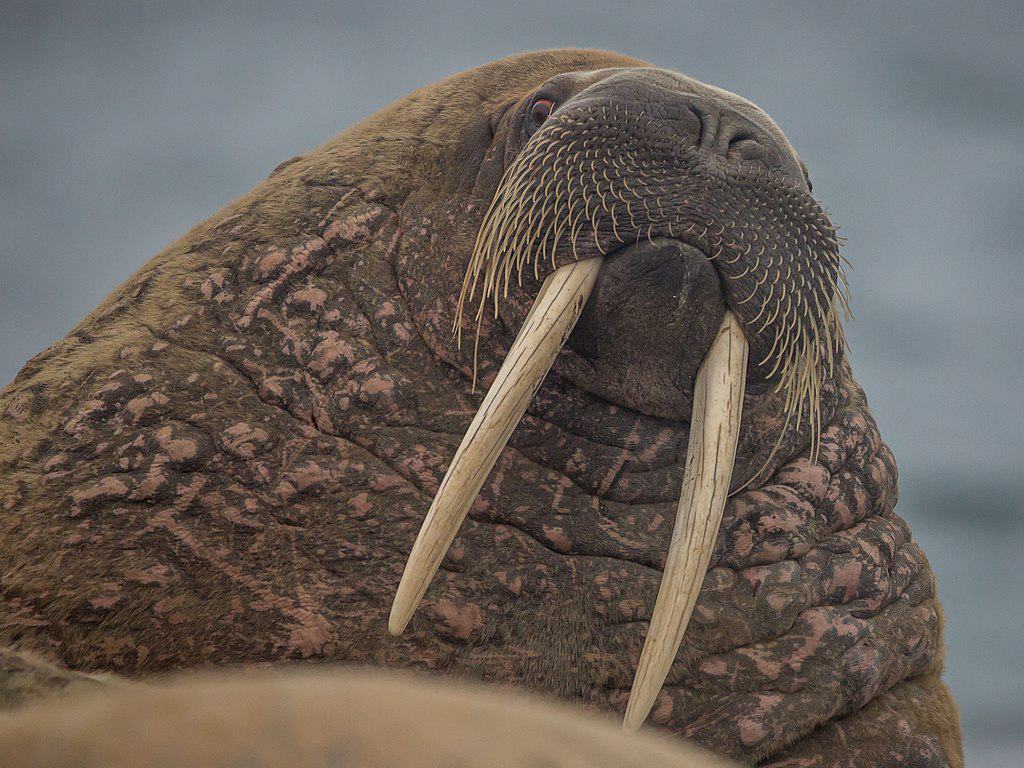Discover Animals Beginning with W. Explore our comprehensive list of animals starting with the letter W, complete with intriguing facts about each one.
This list takes us through an exciting world of animals that start with the letter W. So sit back, and enjoy!
Overview of animals that start with W
1. Whale Shark

| Scientific Name | Rhincodon typus |
| Where it Lives | Tropical and warm temperate seas worldwide |
| What it Eats | Plankton, small fish, and occasionally squid or crab |
| Conservation Status | Endangered |
Fun Fact: Whale sharks are so huge that they can grow up to 40 feet in length.
Whale sharks, the largest fish in the world, are gentle giants known for their filter-feeding habits. Despite their immense size, they pose no danger to humans. Their diet mainly comprises plankton, small fish, and occasionally squid or crab. These magnificent creatures are prevalent in warm waters and open oceans around the globe, enchanting marine enthusiasts and scientists alike with their awe-inspiring presence.
2. Walrus
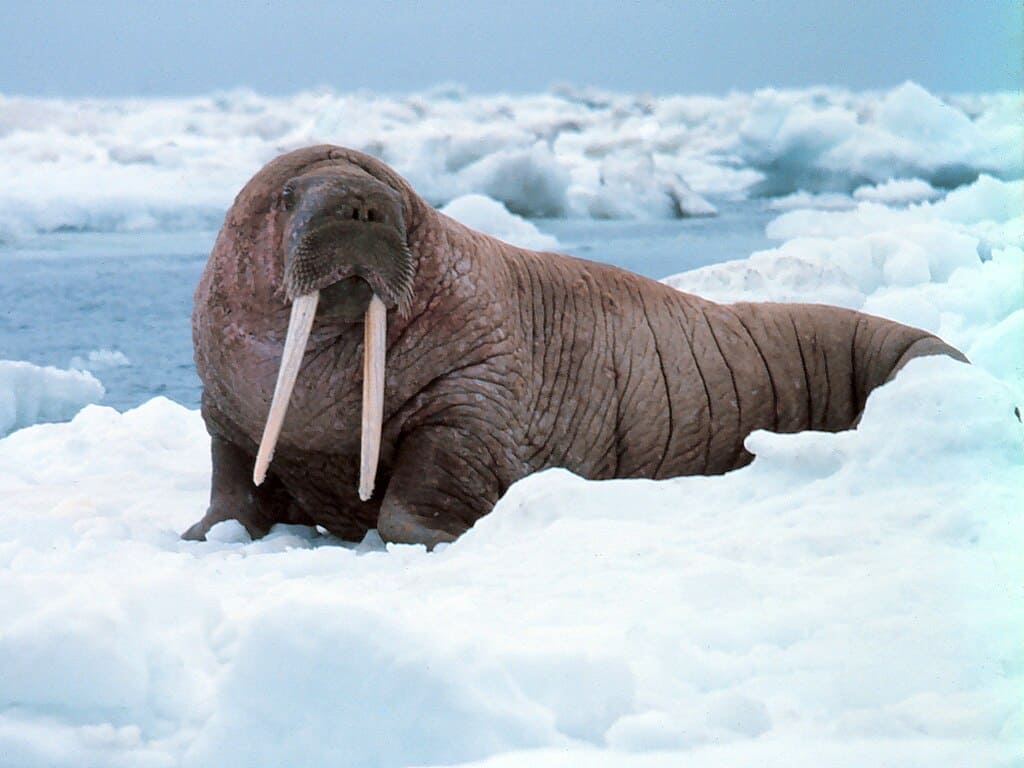
| Scientific Name | Odobenus rosmarus |
| Where it Lives | Arctic regions, primarily around ice floes |
| What it Eats | Benthic invertebrates, such as clams, mussels, and worms |
| Conservation Status | Vulnerable |
Fun Fact: Walruses have up to 250 whiskers on their face.
Walruses are characterized by dense fur, a set of tusks, and whiskers, along with flippers for swimming. Inhabiting the Arctic Circle, they are commonly seen on oceanic ice floes.
Male walruses, larger than their female counterparts, play a protective role for their families, guarding against predators and ensuring their well-being.
3. Weasel
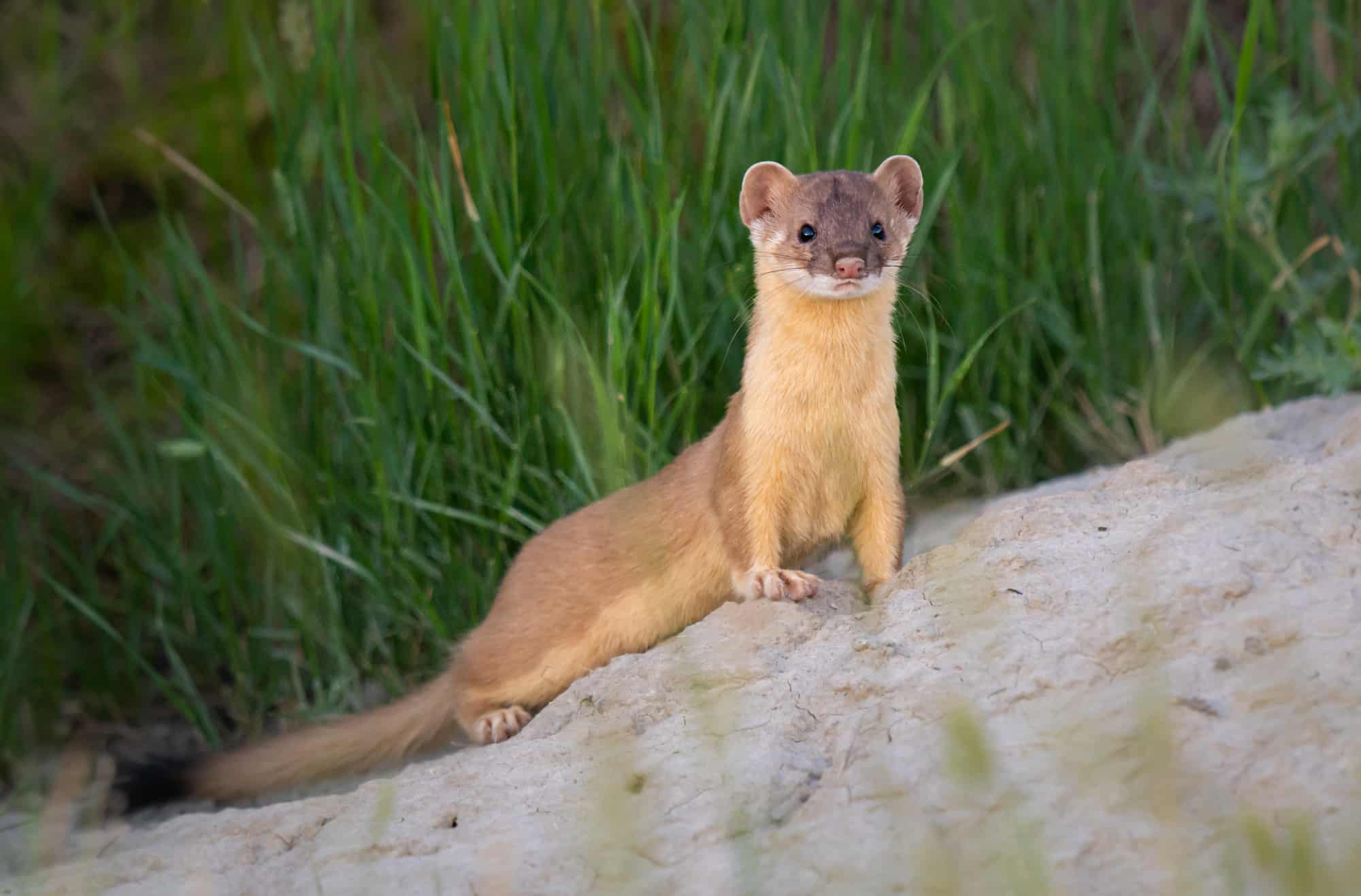
| Scientific Name | Mustela spp. |
| Where it Lives | Found on every continent except Antarctica, often in grasslands, forests, and tundra regions |
| What it Eats | Small mammals, birds, eggs, insects, and occasionally fruits and vegetation |
| Conservation Status | Varies depending on species, some are of least concern while others are threatened or endangered |
Fun Fact: Smallest carnivorous mammals, have to eat one-third of their body weight each day for survival.
Weasels, belonging to the Mustela genus, are renowned for their small yet formidable stature. These agile carnivores inhabit diverse ecosystems worldwide, from the Arctic tundra to temperate woodlands and grasslands. Despite their size, they are skilled hunters, preying upon small mammals, birds, and insects with precision. Weasels play a crucial role in ecosystem dynamics, contributing to the delicate balance of nature with their sleek bodies and swift movements.
4. Wyoming Toad

| Scientific Name | Anaxyrus baxteri |
| Where it Lives | Wet meadows, marshes, and ponds in southeastern Wyoming, USA |
| What it Eats | Insects, small invertebrates |
| Conservation Status | Critically Endangered |
Fun Fact: They release poisonous substances from their neck gland when attacked by predators.
Wyoming Toads are already extinct in the wild, but they still exist in zoos and animal preservation centers. These amphibians prey on beetles and ants. They have two bulged eyes, but they still rely on their hearing senses to locate their food.
5. Woodpecker

| Scientific Name | Varied across species, e.g., Picidae family |
| Where it Lives | Varied, depending on species; often forests and woodlands |
| What it Eats | Primarily insects found in wood, also seeds and nuts |
| Conservation Status | Varies widely depending on species, some are of least concern while others are threatened or endangered |
Fun Fact: Woodpeckers have specialized feathers around their beaks to shield their eyes from debris.
Woodpeckers inhabit various regions globally, excluding the polar areas, and are typically found in tree-rich environments. Their feet are uniquely adapted for a firm grip on tree trunks, where they also create their nests.
Primarily seed-eaters, woodpeckers are omnivorous and face threats from rodents, snakes, and wild cats.
6. Wooly Monkey
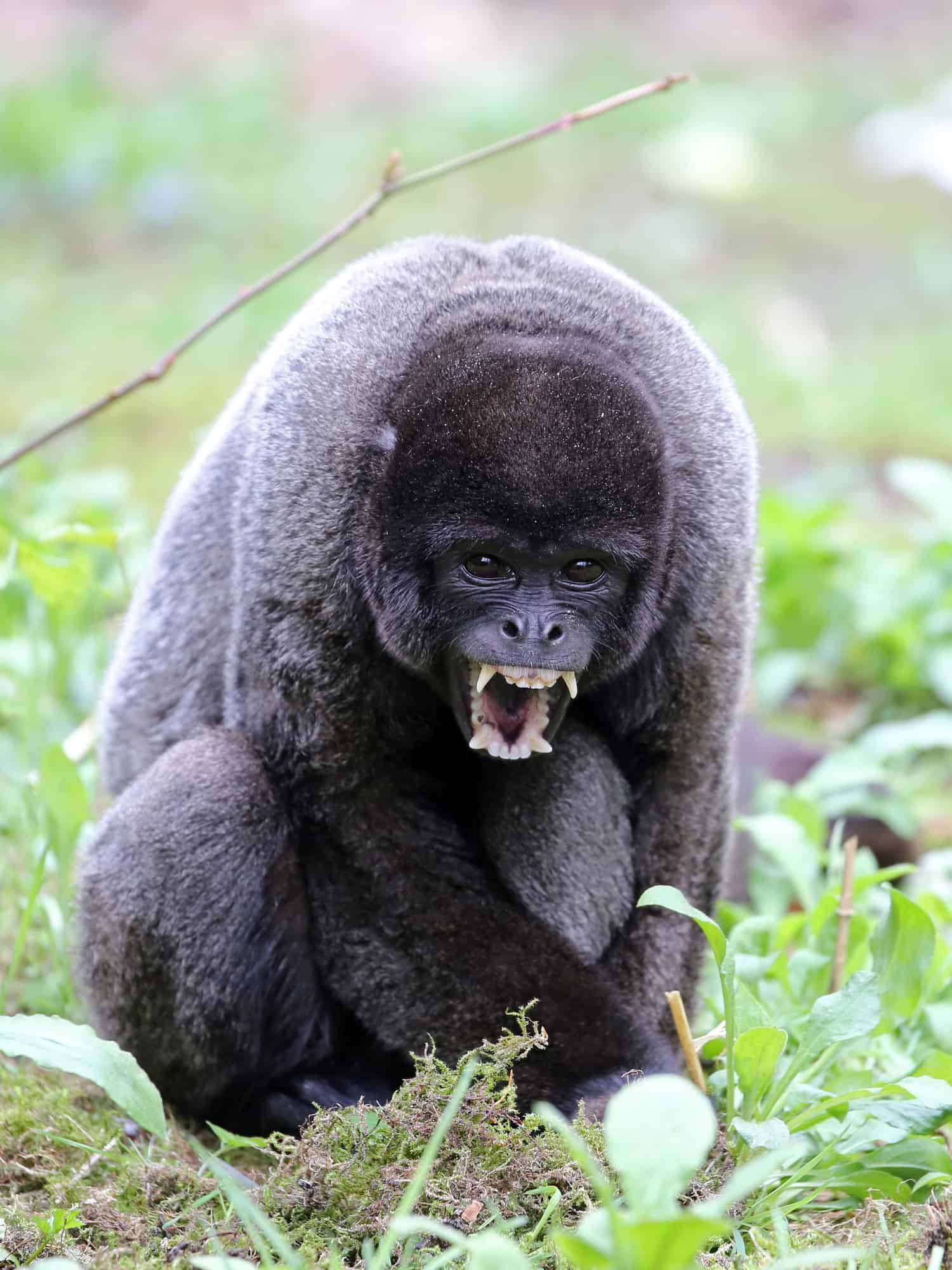
| Scientific Name | Lagothrix spp. |
| Where it Lives | Tropical rainforests of South America, primarily in the Amazon Basin |
| What it Eats | Primarily fruits, leaves, nuts, seeds, and occasionally insects |
| Conservation Status | Varies depending on species; some are Vulnerable or Endangered due to habitat loss and hunting |
Fun Fact: They get their name from their soft fur that looks like wool.
Woolly monkeys are charming inhabitants of the lush South American rainforests. With its captivating shaggy coat and playful antics, this arboreal creature adds a touch of magic to the canopy. Join us as we explore the captivating world of the woolly monkey, a vital link in the vibrant tapestry of the Amazon.
7. Walking Catfish

| Scientific Name | Clarias spp. |
| Where it Lives | Southeast Asia, including countries like Thailand and Indonesia |
| What it Eats | Fish, insects, plant material |
| Conservation Status | Varies depending on species, some are of least concern while others may be threatened |
Fun Fact: They have modified gills that allow them to survive in moist land for an extended period.
Walking Catfishes are freshwater fishes found in ponds, lakes, and swamps. These omnivores are located mainly in Asia. They are found singly and form pairs only during mating seasons.
8. Walleye Fish
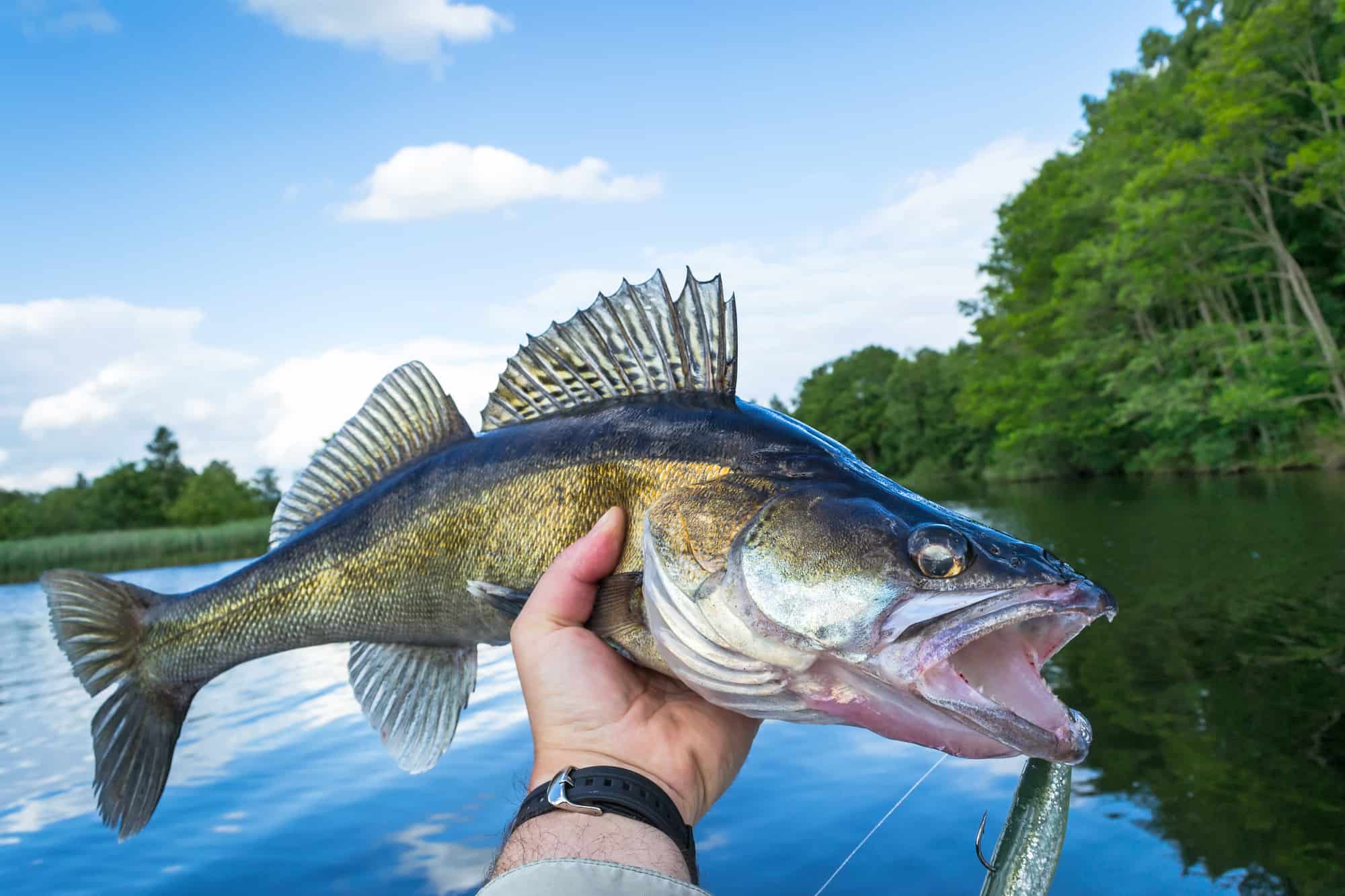
| Scientific Name | Sander vitreus |
| Where it Lives | Freshwater lakes, rivers, and reservoirs, primarily in North America |
| What it Eats | Mainly smaller fish such as perch, minnows, and shiners, as well as insects and crayfish |
| Conservation Status | Least Concern |
Fun Fact: Their bulged eyes give them good vision at night.
Walleye, or Yellow pikes, inhabit freshwater environments. These creatures possess typical fish anatomy but are distinguished by their large, glassy eyes. They thrive in various aquatic settings, including lakes, streams, and ponds, where they often gather in groups, particularly in the shallow regions of their habitat.
9. Warthog
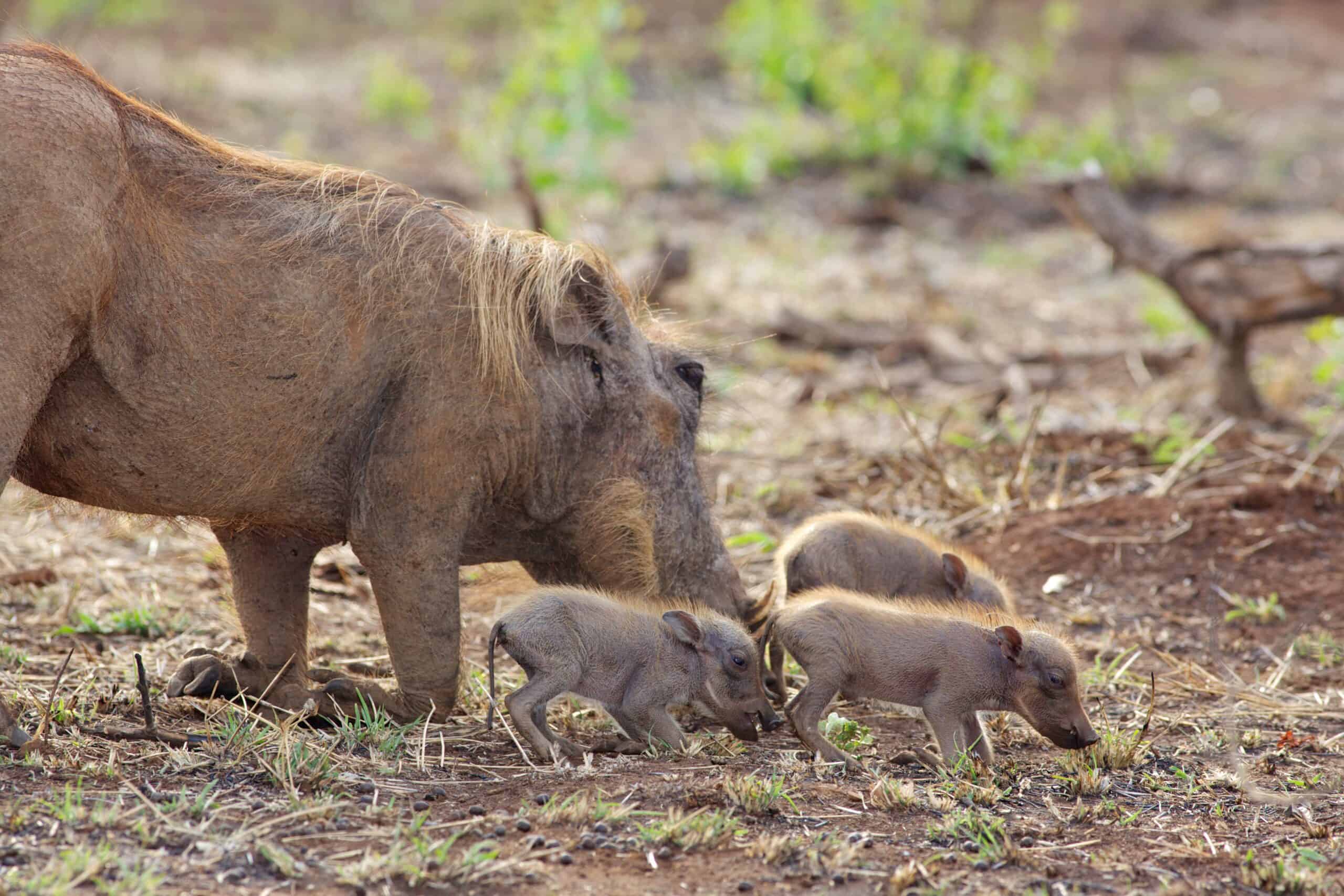
| Scientific Name | Phacochoerus africanus |
| Where it Lives | Grasslands, savannas, and woodlands in sub-Saharan Africa |
| What it Eats | Omnivorous; primarily feeds on grass, roots, bulbs, fruits, and occasionally small animals |
| Conservation Status | Least Concern |
Fun Fact: Warthogs do not construct their own homes; they inhabit abandoned dens originally made by aardvarks.
Warthogs are African mammals that are primarily herbivorous, feeding mostly on bulbs, grasses, and roots, but they resort to meat consumption when plant resources are limited. Warthogs are distinguished by large facial bumps and two sets of tusks, and they possess robust hooves for digging into the earth.
10. Water Buffalo

| Scientific Name | Syncerus caffer |
| Where it Lives | Savannas, grasslands, and woodlands in sub-Saharan Africa |
| What it Eats | Grasses, herbs, shrubs, and occasionally aquatic plants |
| Conservation Status | Least Concern |
Fun fact: Their horns can grow up to 10 feet!
Water buffalo travel in herds and are attacked by many wild animals. They are a cosmopolitan species and have been domesticated for thousands of years. Water Buffaloes spend a lot of their day in rivers, or sometimes wallowing in the mud like pigs.
11. Western Gorilla
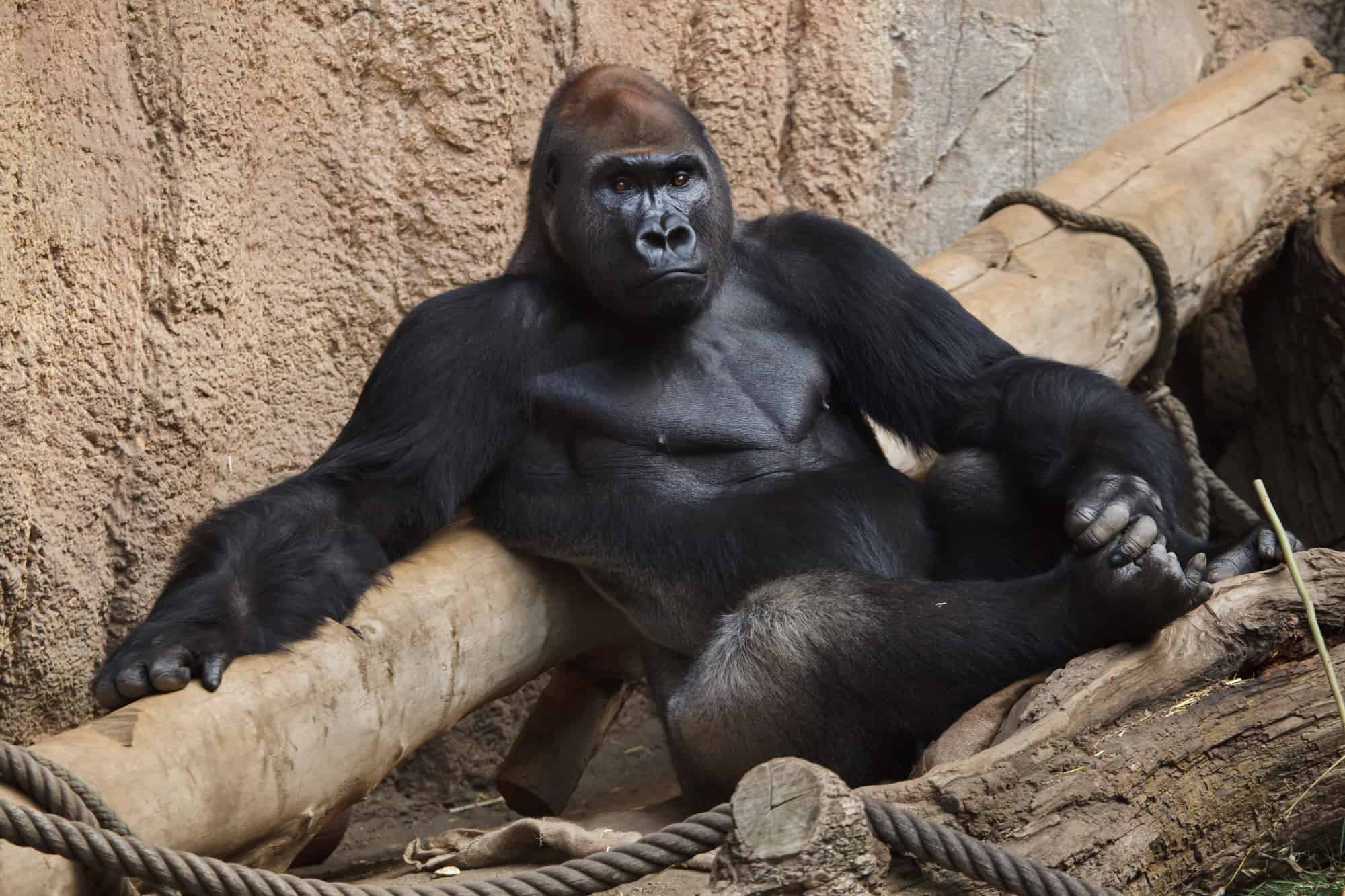
| Scientific Name | Gorilla gorilla |
| Where it Lives | Central African rainforests and swamps |
| What it Eats | Herbivorous; eats fruits, leaves, shoots, and insects |
| Conservation Status | Endangered |
Fun Fact: These mammals make basic tools to gather their food effectively.
Western gorillas are one of the two subspecies of the African gorilla and a species facing endangerment. These majestic apes command attention with their imposing size, as the average male can weigh between 250 to 400 pounds. With a lifespan spanning 35 to 50 years, they traverse the lush rainforests of Central Africa, where they primarily forage on a herbivorous diet of fruits, leaves, and shoots, occasionally supplementing with insects and lizards. Join us as we delve into the fascinating world of the Western gorilla, an iconic symbol of the rich biodiversity of the African continent.
12. White Tiger
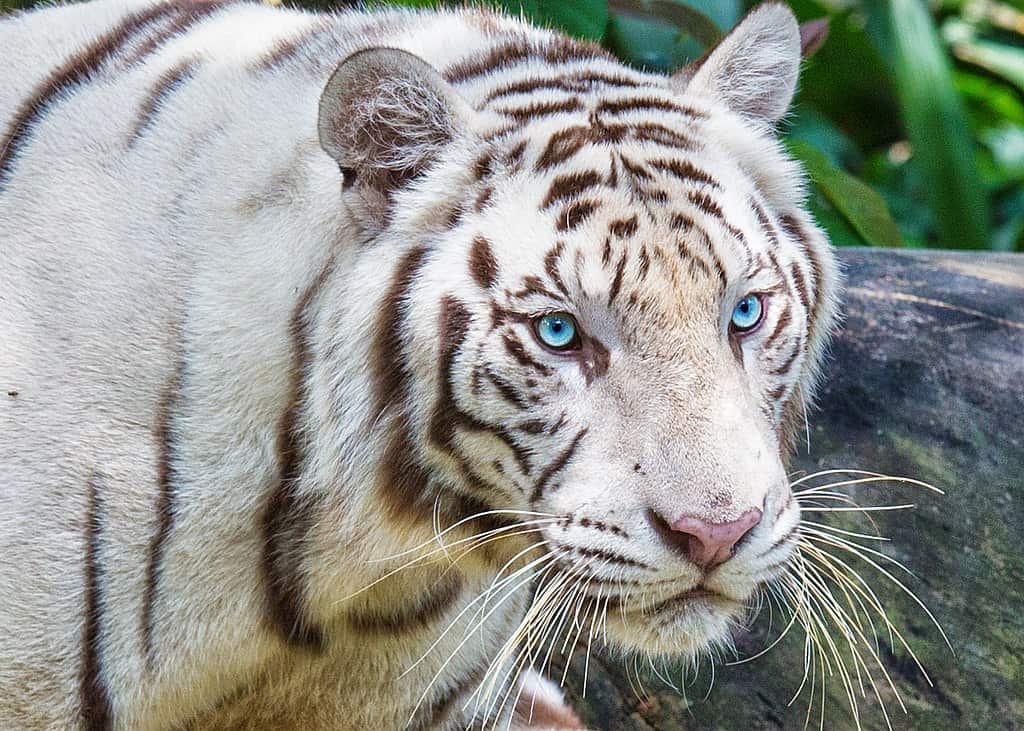
| Scientific Name | Panthera tigris (specifically Panthera tigris tigris) |
| Where it Lives | Varied, but historically found in dense forests and grasslands of India, Nepal, and Bhutan |
| What it Eats | Carnivorous; preys on deer, wild pigs, and other large mammals |
| Conservation Status | Critically Endangered due to habitat loss, poaching, and genetic issues |
Fun Fact: White Tigers mate specifically with other White Tigers with their genes.
White tigers thrive in habitats with a good supply of water. Their furs are white with black stripes. White tigers have blue eyes, which are easily spotted by their prey. They feed on herbivore animals. They are the second-largest tiger species after the Siberian tiger, weighing about 300 – 400kg.
13. Wallaby

| Scientific Name | Various species within the Macropus genus |
| Where it Lives | Varied, but typically found in grasslands, forests, and scrublands of Australia and nearby islands |
| What it Eats | Herbivorous; feeds on grasses, leaves, and shrubs |
| Conservation Status | Least Concern for many species, but some are Vulnerable or Endangered due to habitat loss and hunting |
Fun Fact: Wallabies face predation from various animals, including domestic dogs and cats.
Wallabies, approximately 30 species of marsupials, exhibit similarities to kangaroos while boasting a distinctive shorter stature. These charming creatures are often found in groups, foraging on a diet comprised of grasses, leaves, fruits, and seeds. Their communal movements and varied diet contribute to their adaptability in diverse environments, marking them as fascinating inhabitants of the Australian landscape.
14. Whiptail Lizard

| Scientific Name | Various species within the Teiidae family |
| Where it Lives | Varied, but typically found in arid or semi-arid regions of North, Central, and South America |
| What it Eats | Insectivorous; feeds primarily on insects and other small invertebrates |
| Conservation Status | Least Concern for many species, but some are Vulnerable due to habitat loss and human activity |
Fun Fact: A lot of them reproduce asexually.
Whiptail lizards receive their name because of their long, slim tails, about three times their body length. These reptiles have a lifespan of seven years and are prey to foxes, coyotes, hawks, and Gila lizards.
15. White Ferrets
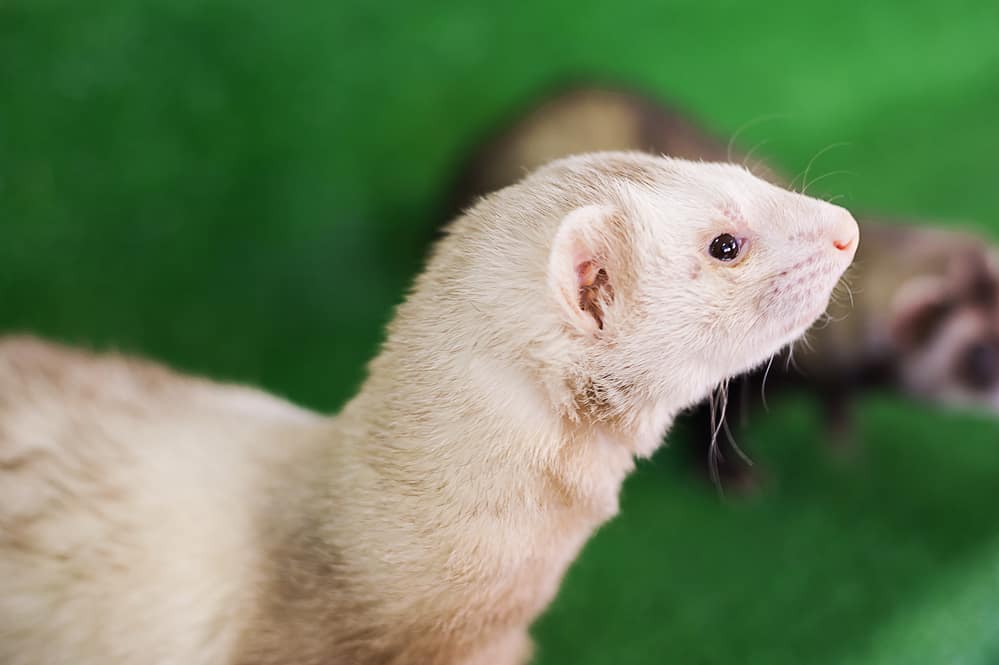
| Scientific Name | Mustela putorius furo |
| Where it Lives | In homes as pets |
| What it Eats | Carnivorous; primarily fed on meat-based diets, including specially formulated ferret food |
| Conservation Status | Not Evaluated |
Fun Fact: These carnivores occasionally eat vegetables and fruits.
White Ferrets are mainly domestic and unable to survive in the wild. They are social animals, and you can also refer to them as Albino Ferrets. They are carnivores and feed on rats, mice, and rabbits. These animals typically live about 6 to 10 years in captivity. These playful animals have high energy levels and have an extremely curious nature.
16. Western Rat Snake

| Scientific Name | Mustela putorius furo |
| Where it Lives | Domesticated; kept as pets in homes and sometimes used for hunting rodents |
| What it Eats | Carnivorous; primarily fed on meat-based diets, including specially formulated ferret food |
| Conservation Status | Least Concern |
Fun Fact: These snakes can reach lengths of up to 9 feet.
Western Rat snakes from North America possess black skin adorned with white markings, which darken with age. Western Rat snakes have specialized scales on their underside, facilitating efficient tree climbing. In captivity the live up to 10 years.
17. Wild boar

| Scientific Name | Sus scrofa |
| Where it Lives | Varied, but typically found in forests, woodlands, and grasslands |
| What it Eats | Omnivorous |
| Size | Adults can weigh between 90 to 200 kilograms (200 to 440 pounds) |
| Conservation Status | Least Concern |
Fun Fact: The males of these weird mammals use their upper tusks to sharpen their lower tusks.
Wild Boars are also known as Wild pigs. These omnivores have a lifespan of 15 – 20 years. They usually travel in groups and are found in Asia and Europe. Their young ones are cared for by their moms until they get to their second year. Adults weigh up to 440 pounds and they are stockily built with robust fur.
18. White-Tailed Eagle

| Scientific Name | Haliaeetus albicilla |
| Where it Lives | Coastal areas, estuaries, lakes, and rivers in Europe and parts of Asia |
| What it Eats | Carnivorous |
| Conservation Status | Least Concern |
Fun Fact: They are the largest birds in Europe, with wingspans of about 6 – 8 feet.
White-tailed Eagles are apex predators. They live in a wide range of countries, especially in Europe. The feathers of these birds are brown, and as their name suggests, they have whitetails. They feed mainly on fishes and you can also call them Eurasian Fish Eagles.
19. White Rhinoceros
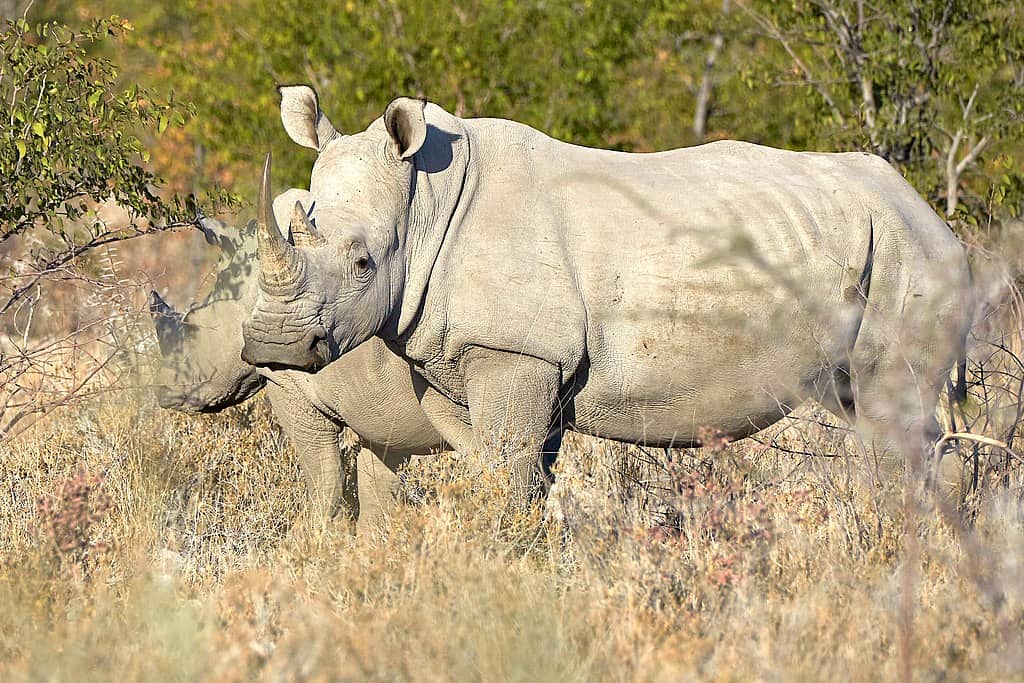
| Scientific Name | Ceratotherium simum |
| Where it Lives | Grasslands and savannas of southern Africa |
| What it Eats | Herbivorous; grazes on grasses and other vegetation |
| Conservation Status | Near Threatened due to habitat loss and poaching for their horns |
Fun Fact: They are the second-largest land animals in the world.
White Rhinoceros are solitary animals that feed mainly on fruits, grasses, and leaves. They live in Tropical bushland and savannah habitat. They are on of the largest land mammals weighing between 4,000 and 5,500 pounds! These solitary animals are listed as Near Threatened due to the excessive poaching for their horns.
20. Whoodle

| Scientific Name | Canis lupus familiaris |
| Where it Lives | Homes worldwide |
| What it Eats | High quality dog food and animal protein |
| Conservation Status | Not Endangered |
Fun Fact: Whoodles are excellent swimmers.
Whoodles are a mixed breed of a Poodle and a Wheaten Terrier. They feature very long furs. These pets are quite intelligent, but they are quite expensive pets to own.
These dogs are medium to large in size, typically weighing between 20 to 45 pounds (9 to 20 kilograms). They make for longliving pets as they age to around 25 years and love being involved in the families activities.
Summary of animals that start with W
Learn 10 Animals starting with W. What animals start with the letter W? Source: Youtube, Uploaded: Saprize World
Well, that was a fun ride, wasn’t it? We hope you had a great time. The thrill doesn’t have to end here. Here is another list of animals that start with F for you to enjoy. We’ll see you next time.
- Animals That Start With A
- Animals That Start With B
- Animals That Start With C
- Animals That Start With D
- Animals That Start With E
- Animals That Start With F
- Animals That Start With G
- Animals That Start With H
- Animals That Start With I
- Animals That Start With J
- Animals That Start With K
- Animals That Start With L
- Animals That Start With M
- Animals That Start With N
- Animals That Start With O
- Animals That Start With P
- Animals That Start With Q
- Animals That Start With R
- Animals That Start With S
- Animals That Start With T
- Animals That Start With U
- Animals That Start With V
- Animals That Start With X
- Animals That Start With Y
- Animals That Start With Z
Join our Forum for free today!

- These are The 5 Largest Great White Sharks Ever Recorded - July 19, 2024
- The Surprising Benefits of Big Game Hunting - July 18, 2024
- $100k+ Hunting Experiences The Most Expensive Animals to Pursue - July 17, 2024

